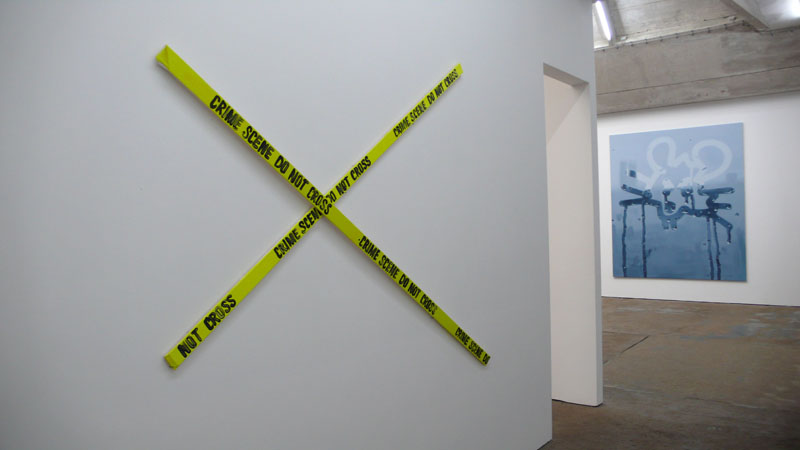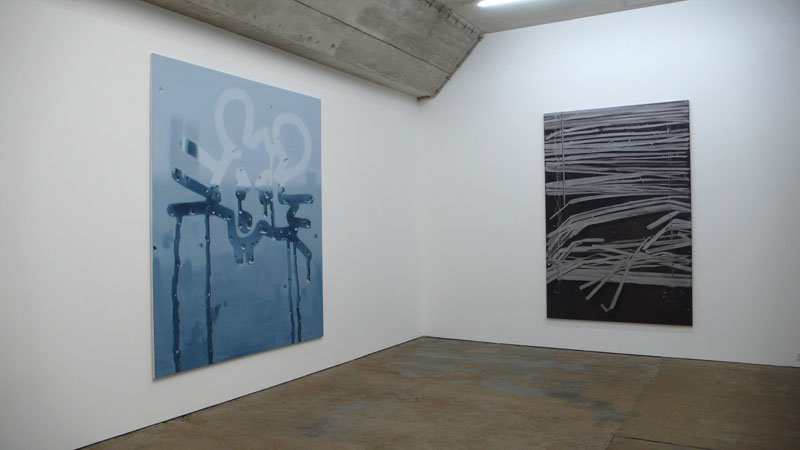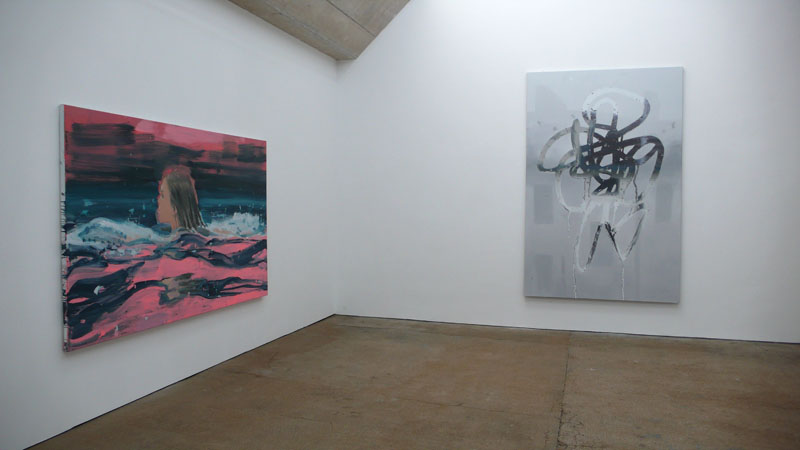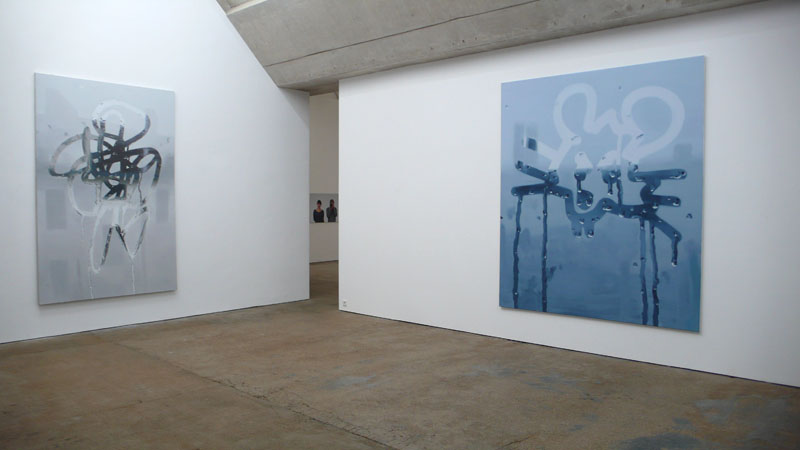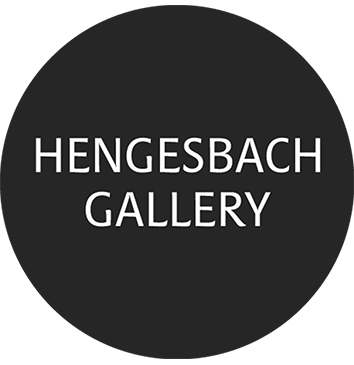Markus Willeke
3 – 28 February 2014
Forceful and immediately legible: such are the paintings of Markus Willeke. In his works, both painting and subject matter are equally present; the formats are expansive, and the gesture is impetuous. Due to their large formats and simple motifs, Willeke’s works recall American Pop Art, but in their impulsivity and fluidity they are closer to graffiti and street art. The image event in Willeke’s work appears all at once—it is not the starting point for a narrative. His fast and powerful brushwork lends the paintings a unique intensity and presence. This gives the works a veritable image force, born from the brilliance of color contrasts and the confidence of brush technique. Like a massive surge, a spray of paint matter flows across the canvas.
This creates the impression that the content emerges effortlessly from the act of painting itself, spontaneously invented during the process. On one hand, this results in a certain magic and power; on the other, a fleeting and elusive quality. The directness of the color application and the assured, rapid brushstrokes give the impression that content strikes the canvas and vanishes just as quickly. This effect is especially evident in Willeke’s latest motifs, which reference children’s finger paintings on fogged-up glass: once the sun and warmth hit the surface, the finger drawings dissolve. Willeke’s paintings breathe with this same intensity of the moment. The paintings are thus also a celebration of light, which—with shimmering surfaces and reflective droplets—speaks of beauty and impermanence.
Willeke’s newest works point to ambivalent experiences of situations in which two sides of a matter emerge: an intact blind opens the interior to the outside world and, when closed, shields private events from view. However, once this barrier is destroyed—the sharp slats brutally bent and torn—it violently exposes the fragile illusion of private intimacy in social life. From a water surface, a beautiful female head briefly emerges into the open space of the shared landscape. Her body remains hidden in the shimmering darkness of the water. Will she remain submerged there, drift away, forever removed from our gaze?
On a pearly wet surface, an infinite loop is inscribed—initially powerfully—yet it slowly begins to dissolve. Has it lost its thread and become tangled in its own meanderings? A giant roller coaster appears within reach. In the drive of its accelerating motion, it simultaneously seems to vanish into the glowing horizon. Willeke’s paintings leave behind a disquiet about what might be lurking behind surfaces and movement. They suggest uncontrollable or unfathomable transitions of fleetingness, whose weight—like the tip of an iceberg—is impossible to gauge. At the same time, Willeke’s paintings allude to the operational mode of images in our media-saturated world. Such images pass lightly and uncontrollably across the threshold of our consciousness, slipping into our visual memory, where harmless, peaceful pictures lie alongside terrifying ones. There, they remain like dormant sleepers, only to later awaken in unpredictable associative linkages—suddenly triggering inexplicable fears whose threatening nature cannot be clearly grasped.
Installation Views
